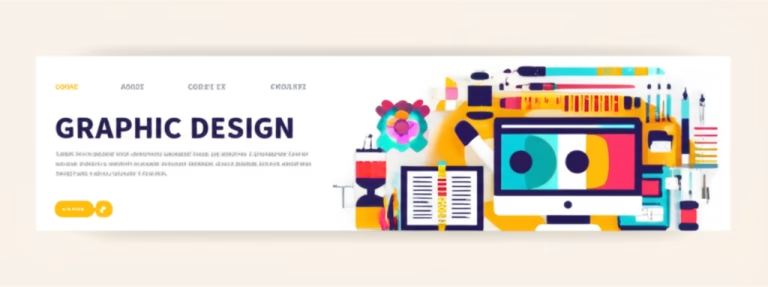Secure Your First Design Clients with a Strong Portfolio: A Beginner’s Guide
Are you an aspiring designer eager to kickstart your career but feeling stuck because you don’t have “real” projects for your portfolio? Many beginners face this common hurdle. It’s easy to feel overwhelmed, thinking you need years of experience or a long list of big-name clients to even begin. But here’s the truth: every successful designer started exactly where you are. You can build a compelling portfolio that attracts your first design clients, even with limited experience. This guide will show you how to overcome that initial barrier and position yourself for success in the creative market, empowering you to land those initial opportunities.
Table of Contents
What is a Design Portfolio and Why is it Crucial for Beginners?
A design portfolio isn’t just a collection of your work; it’s your professional story, your visual resume, and your primary tool for attracting design clients. For beginners, it’s even more critical because it demonstrates your potential, your problem-solving skills, and your unique style. It’s how potential clients assess if you can deliver on their needs, showcasing your capabilities and approach. Without one, even the most talented designer will struggle to gain traction and achieve freelance design success in the competitive market.
Building Your Portfolio from Zero: Practical Steps for Impact
Simulate Real-World Projects to Showcase Your Skills
Don’t wait for paying clients to start building your portfolio. Instead, actively create self-initiated or hypothetical projects. Think about common problems you can solve with design, or identify areas where design intervention could add significant value. For example, consider these ideas:
- Redesign the logo and entire branding identity for a local small business you admire.
- Develop a complete website concept, including user experience (UX) and user interface (UI) designs, for a fictional startup solving a modern problem.
- Design a comprehensive set of social media graphics, campaign visuals, or even an annual report for a non-profit organization you feel passionate about.
These simulated projects are invaluable. They allow you to showcase your skills, document your design process from conception to completion, and highlight your creative problem-solving abilities. Crucially, focus on projects that genuinely align with the type of work you *want* to do and the kind of design clients you aspire to attract. This strategic approach ensures your portfolio is a true reflection of your professional aspirations.
Curate, Don’t Accumulate: Focus on Quality Over Quantity
When it comes to your portfolio, quality over quantity is an absolute imperative. Instead of including every single piece of work you’ve ever created, meticulously select your strongest 5-10 projects. Each project entry should tell a compelling story, guiding the viewer through your thought process:
- What was the initial challenge or problem you aimed to solve?
- Outline your design process: what steps did you take, what research did you conduct, and what iterations did you explore?
- Present the final solution and, if possible, discuss its potential or actual impact.
Presenting fewer, meticulously explained projects demonstrates focus, professionalism, and a deep understanding of design principles. This helps potential getting hired in design opportunities recognize your commitment to excellence and your ability to deliver meaningful results.
Choose the Right Platform to Showcase Your Work Effectively
Selecting the appropriate platform to display your work is vital for reaching potential design clients. Several platforms cater to different needs:
- Behance: This platform is excellent for showcasing detailed visual projects and allowing you to present comprehensive case studies for each piece.
- Dribbble: Ideal for sharing quick snippets, “shots,” and works-in-progress, Dribbble is great for making a quick visual impression and getting immediate feedback.
- Personal Website/Portfolio Site: Building your own website offers complete control over your branding, layout, and presentation. User-friendly platforms like Squarespace, Webflow, or Adobe Portfolio make it accessible to create a professional, custom site without extensive coding knowledge.
Your chosen platform should not only beautifully display your work but also reflect your personal brand and make it incredibly easy for potential clients to navigate and understand your capabilities.
Organize Your Projects for Clarity and Maximum Impact
Every project within your portfolio should be easy to understand and digest, leaving a clear impression of your skills and approach. For each entry, include the following key elements:
- A clear, concise project title that immediately conveys its essence.
- A brief overview outlining the project’s primary goals and objectives.
- Your specific role and contributions to the project, especially in collaborative efforts.
- Compelling visuals that showcase the final design, and crucially, include process work such as sketches, wireframes, or mood boards to illustrate your journey.
- A concise explanation of your key design choices, the rationale behind them, and the overall outcome or impact of the project.
A well-organized and thoughtfully presented portfolio not only demonstrates your professionalism but also makes it significantly easier for clients to quickly grasp your value and envision you working on their projects. This attention to detail is a key aspect of effective portfolio presentation tips.
Positioning Yourself to Attract Your First Design Clients
Define Your Niche (or Start Broad and Refine Over Time)
While it’s tempting to try and be a generalist, especially at the beginning of your career, having a defined niche can make it significantly easier to attract specific design clients. Do you have a passion for branding, web design, motion graphics, or illustration? Even if you’re still exploring, try to identify areas that excite you most and include projects related to them. Over time, as you gain more experience and clarity, your creative career positioning will naturally become more refined and targeted.
Understand Your Ideal Client and Tailor Your Approach
Who do you genuinely want to work with? Are they small local businesses, innovative startups, non-profit organizations, or perhaps established corporations? Understanding your ideal client helps you tailor not only your portfolio content but also your entire messaging and outreach strategy. For instance, if you aim to work with tech startups, your portfolio might lean heavily towards clean, modern web and app design. If your goal is to collaborate with local artisans, a more handcrafted, illustrative, or bespoke branding style might be more appropriate. This targeted approach is crucial for attracting design opportunities that truly align with your aspirations.
Craft Your Presentation and Tell Your Story Effectively
Your portfolio is just one component of your overall presentation. How you articulate your work, explain your design process, and communicate your unique value proposition is equally, if not more, important. Practice explaining your projects concisely, confidently, and enthusiastically. Be prepared to discuss how your design solutions can specifically help potential design clients achieve their business objectives. This is precisely where the E.E.T.A. (Experience, Speciality, Transparency, and Authority) method truly shines. Even without extensive paid experience, you can demonstrate authority and transparency through your well-thought-out projects, clear case studies, and articulate communication.
Network and Engage with the Design Community
Actively participate in online webinars, join relevant design communities (both online and local), and proactively connect with other designers and industry professionals. Many valuable opportunities for design clients often arise through referrals and personal connections. Platforms like LinkedIn can be powerful tools for showcasing your expertise, sharing insights, and connecting with potential collaborators or clients. Engaging with the broader design community also provides invaluable insights, mentorship opportunities, and constructive feedback, helping you continuously refine your skills and approach.
Overcoming the “No Experience” Hurdle: Actionable Strategies
It’s a classic dilemma for every aspiring designer: you need experience to land clients, but you need clients to gain experience. Break this seemingly endless cycle by employing these actionable strategies:
- Personal Projects: As emphasized, these are your foundational building blocks. Treat them with the same professionalism and rigor you would a paid client project.
- Pro Bono Work: Consider offering your design services to a non-profit organization, a local community group, or a friend’s small business. This provides invaluable real-world experience, allows you to build your portfolio with live projects, and can lead to powerful testimonials.
- Internships/Mentorships: If feasible, actively seek out internships or mentorship opportunities where you can learn directly from experienced designers. This hands-on learning accelerates your growth and provides credible experience.
Every piece of work you complete, whether paid or unpaid, contributes significantly to your journey to secure design clients and steadily builds your confidence. Your primary focus should always be on building a robust body of work that unequivocally showcases your skills, even if the initial projects are not for traditional, paying clients. This proactive and resourceful approach is the cornerstone of your early career success.
Conclusion
Starting your design career and securing your first design clients might appear daunting, but it is an entirely achievable goal with a strategic and determined approach. Dedicate your efforts to building a strong, meticulously curated portfolio, even if it means initiating and completing your own projects. Invest time in understanding your unique value proposition, clearly define your professional positioning, and present your work with unwavering confidence and crystal-clear communication. Remember, every single project you complete, every new skill you acquire, and every professional connection you forge brings you closer to realizing your career aspirations. You possess the inherent creativity and the essential drive; now, go forth and build the compelling portfolio that will undoubtedly open doors to your dream design career.
Recommended reading:
- Portfolio and Career – Discover how finding your design niche can attract ideal clients and accelerate your career growth, making your portfolio even more targeted.
External Reference:
- For further insights into professional design practices and ethical guidelines, explore resources from the American Institute of Graphic Arts (AIGA).



